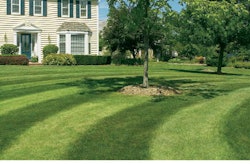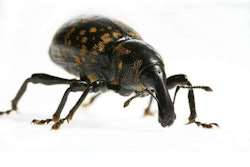
How to reclaim a landscape from vertebrate pests.
When considering pests, it’s common to think about thresholds. In other words, how many weeds, insects or other pests can healthy turf and landscape plants — and the client — tolerate before you implement control strategies. But this concept often doesn’t apply to vertebrate pests such as rabbits, voles and deer, according to Jeff Jackson, retired Georgia’s Extension wildlife specialist. “It may be that only one animal is too much.”
Control of vertebrate pests can be divided into three categories: habitat management (changing the environment in some way to deter pests), population management (favoring others or killing pests) and human dimension (how the client feels about it). The human element always is the deciding factor, as a client’s attachment to animals can sometimes prevent him or her from wanting to eliminate them.
“The human part can overrule the other two,” Jackson says.
The appeal of having an animal habitat in your backyard can quickly fade, though, when you face repeatedly replacing landscape plants mowed down by a hungry rabbit or deer.
When Steve Scoville, president of the Pest Control Center in Sacramento, California, is called in to deal with vertebrate pests in his area, he says client sentiment usually isn’t an obstacle. Homeowners are frustrated and mostly concerned about the safety of the method of control.
“That’s the No. 1 question they have,” Scoville says. “They don’t really care how we get rid of the pests — even if we are or aren’t using chemicals. They just want reassurance that it’s safe, and they want the pest gone.”
Ridding certain wildlife from your landscape is more challenging than dealing with traditional insect pests. Your options may be limited by wildlife regulations, which vary by state. And some control measures, such as shooting or poison baits, may be too risky for urban settings.
Learn everything you can about the natural history and biology of the animal. Then, consider the following options.
Trapping
Trapping is the most common control method Scoville uses against vertebrate pests. “The manpower is more intensive when we have to use traps, and it costs the customer more, but it’s often our only choice,” he says. Check with your state’s wildlife resources office to determine what the laws are for trapping in your area. In California, you must have a trapper’s license. Most states also regulate how to deal with trapped animals. Relocating animals is often not allowed due to the potential for spreading rabies and other diseases. California requires you to euthanize trapped animals.
Chemical controls
Chemical controls, such as poison baits, fumigants and toxicants, are often the easiest and most effective to use, but they may not be practical for clients who have pets.
Label restrictions on fumigants prevent their use within 100 feet of buildings, so it’s rare that they can be used in urban areas. Poison baits, which are Scoville’s preferred method for dealing with voles, aren’t a prudent choice for areas with other desirable animals or small children.
Smoke bombs, or what Scoville refers to as sulfur sticks, can be effective for tunneling pests or those burrowed under concrete. They are most successful when the soil is moist enough to hold the smoke underground and when you’ve ensured all tunnel entrances are covered.
Repellents
Applying repellents often is a client’s first choice for vertebrates. However, it is a short fix at best to ward them off. “Repellents don’t work very well, and the smell is obnoxious,” Scoville says. They can also be time-consuming and unrewarding.
Alternative methods
Planting undesirable ornamentals or less appealing turfgrass varieties works in temperate climates where pests have other food choices. But when food is scarce, this method is less reliable. “If you have a hungry deer that weighs 150 pounds, it’s going to eat whatever is available,” Jackson says.
Fencing can be effective for guarding a landscape, if your client is open to it. If your target pest is rabbits, Jackson says the fence doesn’t have to be very high. “Although we think of them as good jumpers, they jump ahead, not up,” he says. For deer, it’s a bit trickier, as they can easily jump fences or hedges. Your best bet is a 6-foot or higher fence that has a dense hedge in front of it. This provides less of a runway for deer to get airborne.
Wild goose chase
One of the best methods for dealing with Canada geese, which enjoy federal protection as migratory birds, is to employ the services of a dog. The Sprint World Campus in Overland Park, Kansas, did just that in 2001 to keep geese at bay on its 240-acre campus. Shayla, a Border collie specially trained to chase geese, keeps them off sidewalks and away from buildings.
By Cindy Ratcliff











